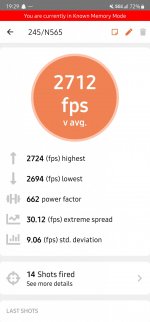I'm trying to track down what is going on with some irregularity in my resizing process.
I have a bullet central sizing die for my 300 Norma, I'm using a redding t7, I set my die up to the headspace I'm looking for, locked it down, use Hornady case lube, and size 100 pieces of brass. 90 of those pieces are within a half thousandth to a thou of each other, but 10 pieces were three thousandths shorter than the shortest of the rest of them. Is there anything obvious that I should be looking for? I generally like to test the first few pieces and then just keep moving with my process, but this is giving me trust issues lol.
I have a bullet central sizing die for my 300 Norma, I'm using a redding t7, I set my die up to the headspace I'm looking for, locked it down, use Hornady case lube, and size 100 pieces of brass. 90 of those pieces are within a half thousandth to a thou of each other, but 10 pieces were three thousandths shorter than the shortest of the rest of them. Is there anything obvious that I should be looking for? I generally like to test the first few pieces and then just keep moving with my process, but this is giving me trust issues lol.


